Passive House Automation System by Loxone
Passive House Automation System by Loxone
Passive House Automation System by Loxone
A passive house automation system by Loxone will uncover the true financial, economic and wellbeing-related benefits of the passive house design. From automated shading and smart lighting to energy management, we approach home automation for passive houses holistically with an extensive range of high-quality products developed in-house.
What is a passive house?
A passive house or Passivhaus is a building that meets meticulous design standards, mainly focused on energy efficiency and temperature control. The true advantage of constructing passive housing, however, is much deeper.
The Passivhaus Trust identified almost 50 different benefits across 6 categories to promote the adoption of the Passivhaus Standard.
Although smart technology is the common thread that connects a passive house with its residents by ensuring their convenience and comfort in their high-performance high-quality homes, the below 3 areas can particularly benefit from a passive house automation system.
Why choose a passive house?
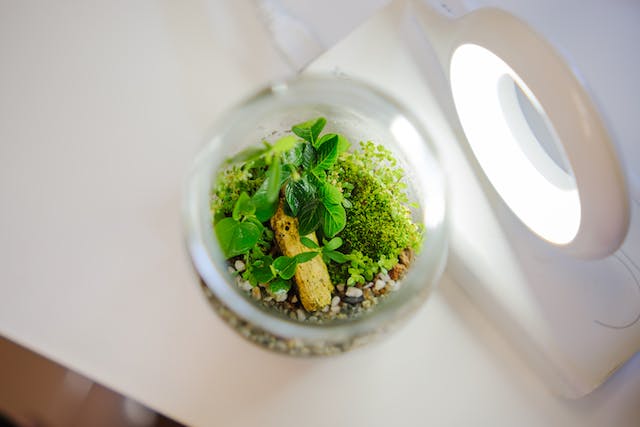
A passive house is low-impact and environmentally conscious
According to the Passivhaus Trust, “a new Passivhaus home built in 2022 will result in 86% fewer lifetime emissions than an equivalent Building Regulations new-build fitted with a gas boiler and 37% fewer lifetime emissions than an equivalent Building Regulations new-build fitted with an Air Source Heat Pump (ASHP)”*. A passive house’s goal is always to reduce its energy demand to speed up decarbonisation and lower emissions.
Although the energy can come from 100% natural sources – such as solar power – which in itself is already great, maximising and prolonging the storage and use of this energy is just as important. Passive houses are designed to take advantage of sunny and warm days when solar power and heat from the sun are naturally at their highest. The building will optimise solar energy for self-consumption, and keep the rooms warm for as long as possible without turning the heating on.
The heating and hot water thermal demand of a passive house averages at 1.6 MWh/year in the UK – significantly lower than 12.5MWh/year of existing and 8.6MWh/year of 2021 new build homes*.
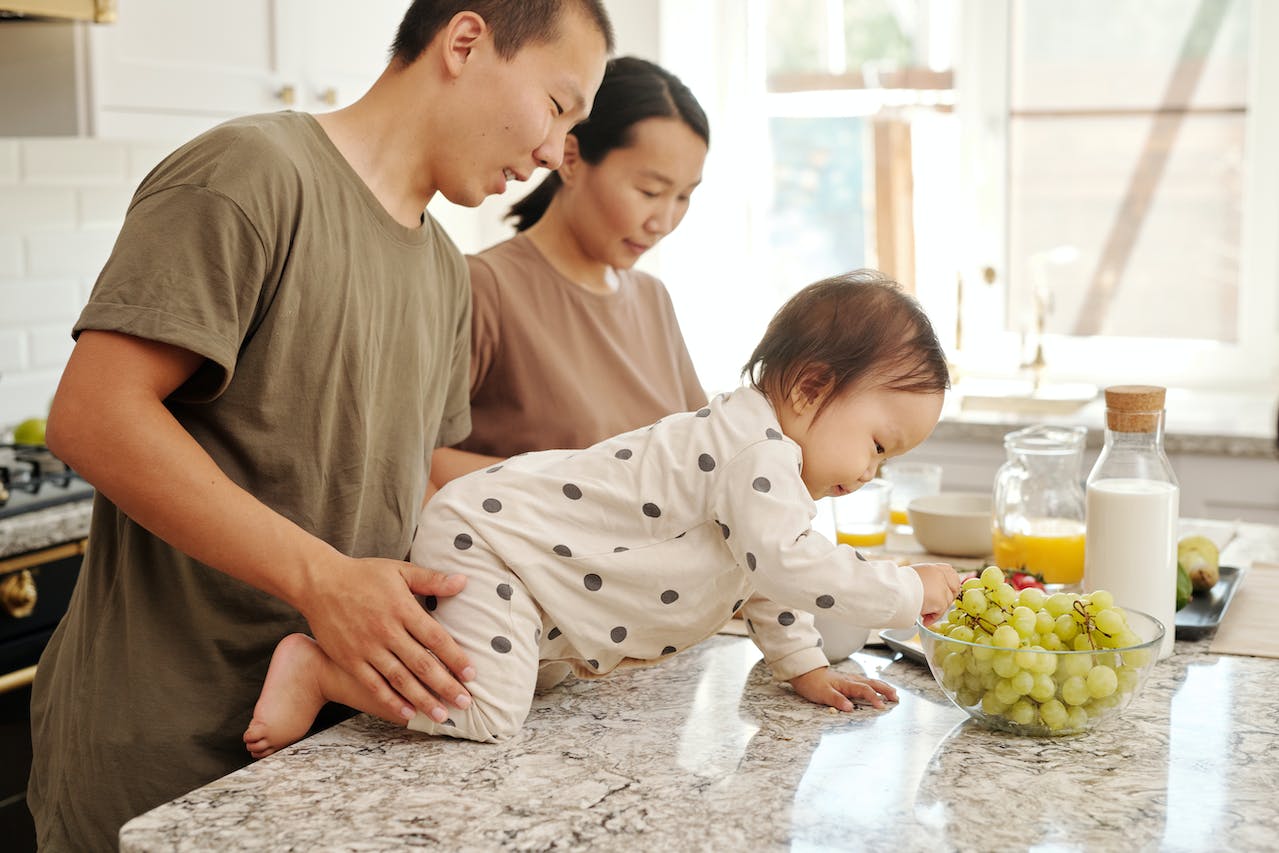
Passive houses promote people’s health, safety and wellbeing
Another essential element of meeting the Passivhaus Standard is providing comfortable, high-quality living spaces for occupants that will promote their health and wellbeing. This includes keeping the home warm to help prevent illness and mould, and the benefits of maintaining good air quality such as protection against airborne bacteria and pollutants.
Living in a constantly warm home throughout the year is also good for the occupants’ mental health and wellbeing as they can worry less about falling ill or having to put in a lot of effort to upkeep the comfort temperatures.
This approach also works to counter heatwaves. Overheating in the summer is a serious issue in the UK. It is in fact a criteria of the Passivhaus Standard that the building’s internal temperature only goes up to 25ºC or above for 5% of the year, as stated by the CIBSE TM59 Overheating Criterion for mechanically ventilated homes in the UK*. Through adequate airflow provided by high-quality ventilation, a passive house will be able to maintain comfortable temperatures throughout the hottest summers.

A passive house helps to reduce running costs, maintenance costs and whole-life expenses
High-performing buildings that meet the Passivhaus Standard must decrease running and whole-life costs by optimising energy usage. According to the Passivhaus Trust, “for a 90m2 dwelling, a passive house delivers a 30% saving on energy bills compared to a typical new build using a gas boiler or an air source heat pump“*. A new-build passive house with an ASHP will have an annual energy cost of £554/year, compared to £801/year in a new build home with an ASHP. The whole life-cost benefit of a passive house with an air source heat pump is £47,000 while one with a gas boiler is £14,000 compared to 2021 Building Regulations over 60 years*.
In the UK, particular attention (and money) needs to be spent on both pre-emptive and counteractive measures when it comes to humidity and the potential damage it can cause to a building. Excess moisture can cause rot, mould and mildew in both your home’s structure and your belongings. Minimising the costs of replacing and repairing these items, buying dehumidifiers and paying maintenance fees will bring a great return on investment.
Is a passive house worth it?
Are passive houses more expensive to build?
The initial costs of building a passive house can be more expensive due to the materials required, but the return of investment of this additional expense is very quick. Building to the Passivhaus Standard can increase costs by 8%, forecasted to reduce to 4% over time as expenses for heating, cooling and energy are minimised*. There’s a possibility to build passive houses with £0 additional cost – as all buildings are unique, this will be dependent on development and construction on a case-by-case basis.
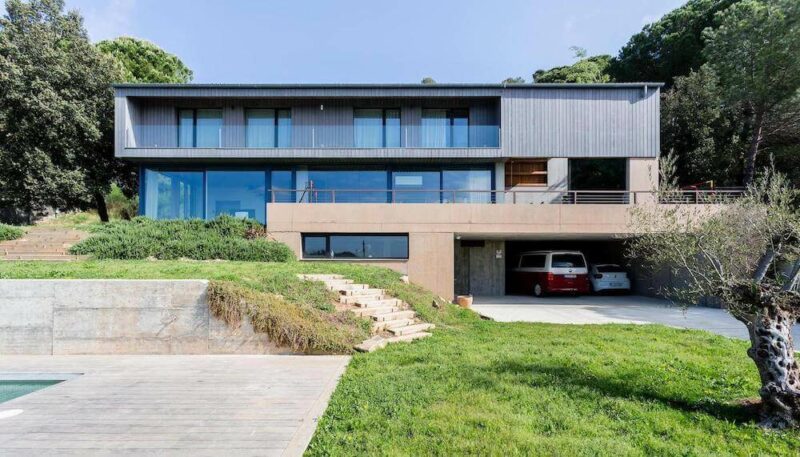
Do passive houses need heating?
Yes. While passive houses are designed to minimise their reliance on central heating when keeping the rooms at comfort temperature, they will still get cold in the winter unless an active heating system – although used sparingly thanks to the building’s structure – is on. Passive houses maintain the heat provided by the sun via great insulation and high-performance windows so the heating system can stay switched off as long as possible, in some cases up to 24 hours, maximising the occupants’ cost-saving on gas and electricity.
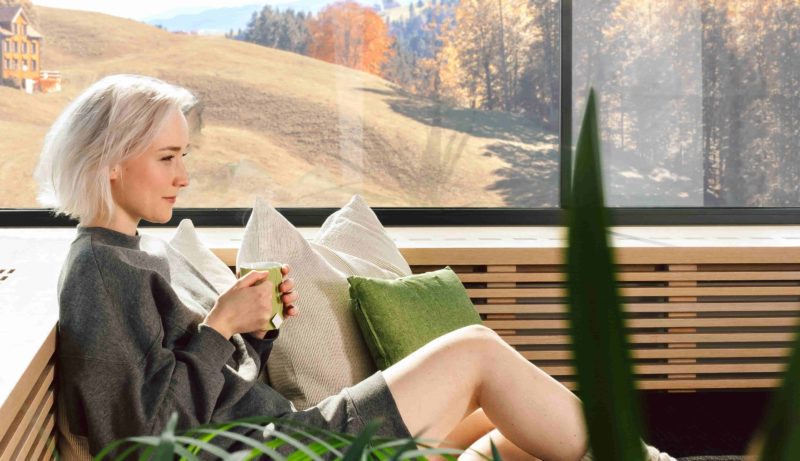
Do passive houses stay cool in the summer without air conditioning?
They can to an extent. According to the PHPP checklist, passive houses must have impeccable ventilation, high-quality glazing and impeccable heat recovery with no thermal bridging. Most passive houses also have an MVHR system, and a design that lends itself to keeping cool. However, the different systems are not designed to work together and so there is a risk of them competing and a large burden on the occupants to manually intervene. Without an active cooling system, these structural elements alone are unable to keep the home from overheating in the summer, and the tedious task of opening/closing windows and blinds to try preempt this is left to the occupants.
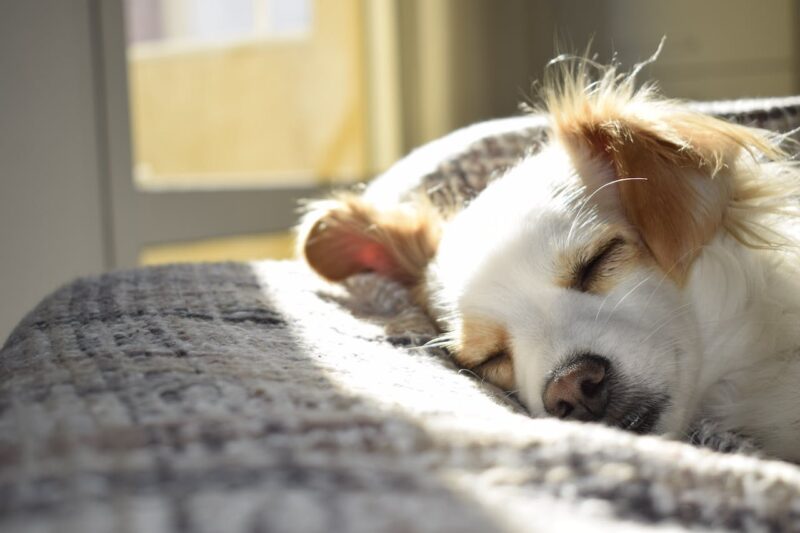
While every home, and therefore every passive house, is unique, generic calculations can be made to summarise the benefits of owning and running a passive house. Living in a passive home for over 25 years can reduce energy bills by £6,175, lower maintenance fees by £2,438, provide social value of £8,744, and improve wellbeing to reduce wellness-related expense by £28,875*.
How does a passive house work with Loxone?
The concept of a passive home often comes with the assumption that because the structural requirements of the PHPP have been met, the building itself is well-equipped enough to save energy and provide enough heating or cooling through passive methods (insulation, wall structure, windows) and active ventilation to maintain a comfortable living space. This is not true. An active system that intelligently controls these functions and other convenient elements such as lighting and shading through automation is crucial to ensure the comfort and convenience you had in mind when investing in the materials and construction of such a home. Preparing to live in a passive home is one thing, spending time in there and experiencing the environment that relies only on the human factor and the structure is another – a passive house automation system helps to maintain your desired quality of life and gives you your money’s worth.
In short: even though you have invested in meeting the criteria for a passive house, the certification itself doesn’t mean that the operation of your home will be as efficient or convenient as possible. While you can live and enjoy your passive home without an automation system (and getting an automation system does not give you a Passivhaus certification), we highly recommend installing one to optimise the comfort, efficiency and control of the building – and to help keep the value of your home in the long-term.
While a passive house already provides the highest quality in design and performance, integrating an intelligent building management system such as Loxone will maximise its full potential for operational performance and user convenience and comfort. A passive house automation system will use as much green resource and energy-efficient technology as possible through a single solution in the most efficient way. For example, it will utilise the heat of the sun in combination with a zoned heating system based on presence and smart blinds that operate according to sun position to maintain comfort temperatures and save energy instead of turning the heating on, or rely on the occupants manually needing to lower or raise the blinds in different parts of the house during the day.
With this in mind, let’s look at how Loxone can enable home automation in a passive house under the Passivhaus Standard.
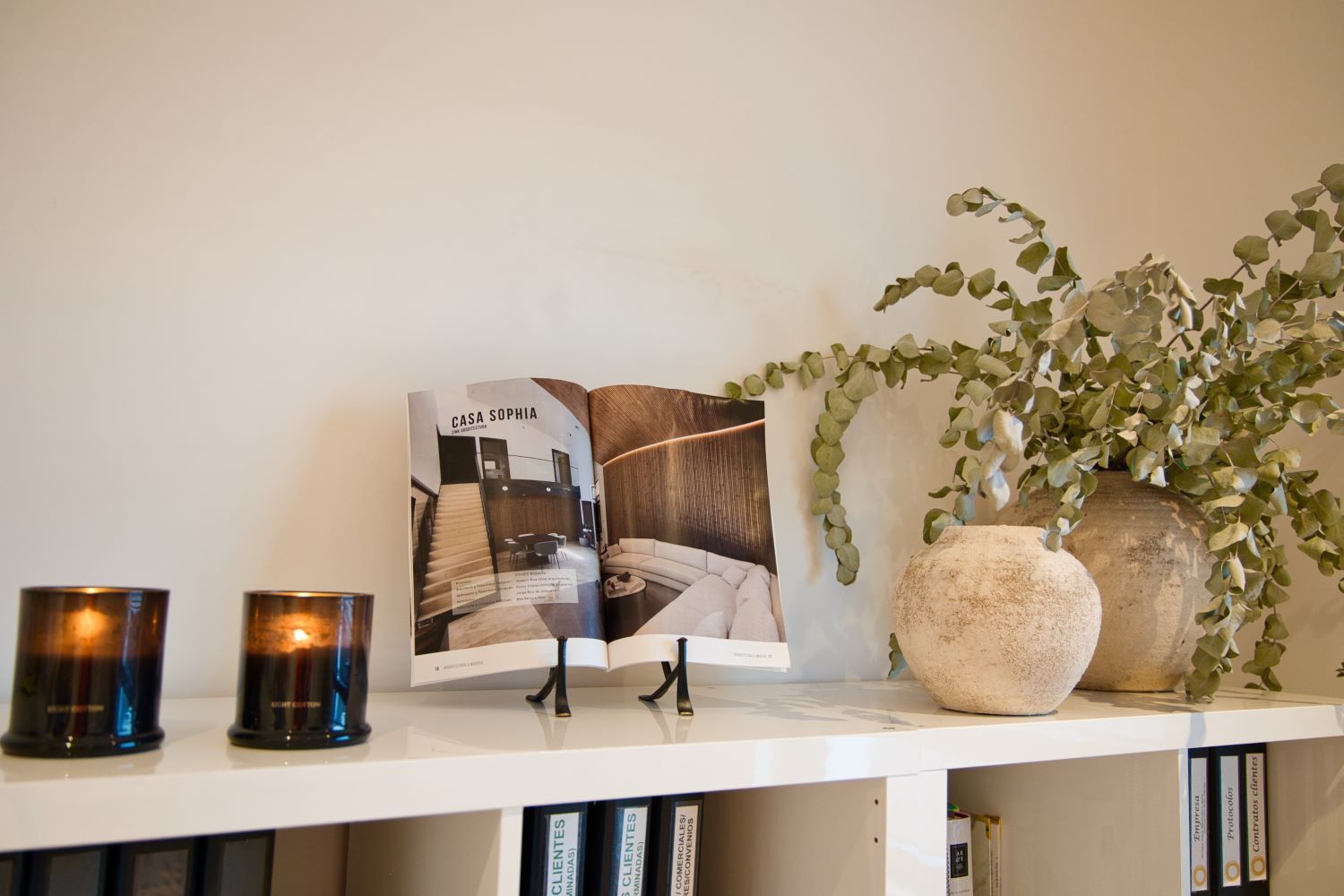
What is the Passivhaus Standard?
The Passivhaus Standard originates from Germany. All principles that grant the certificate including optimised energy efficiency, building performance, low financial impact and the comfort and health & wellbeing of the residents need to be met during an examination by the Passivhaus Institute. The Passivhaus design software (PHPP) provides an extensive checklist to ensure all necessary criteria have been met.
The 4 key criteria that all passive houses need to meet are space heating / cooling demand, energy demand, airtightness and thermal control. These need to be achieved by implementing 5 principles into the building’s design: ventilation with heat recovery, high-quality insulation, no thermal bridging, thermal insulation, and first-class windows.
A passive house automation system integrated with Loxone can address all 4 criteria and provide the purest quality of life and the highest levels of convenience and comfort inside the building through intelligent automation. With intelligent automation by Loxone, the human factor is minimised and the occupants can rely on the truly efficient active operational system to take care of everything.
Loxone and passive housing
Space Heating / Cooling Energy Demand
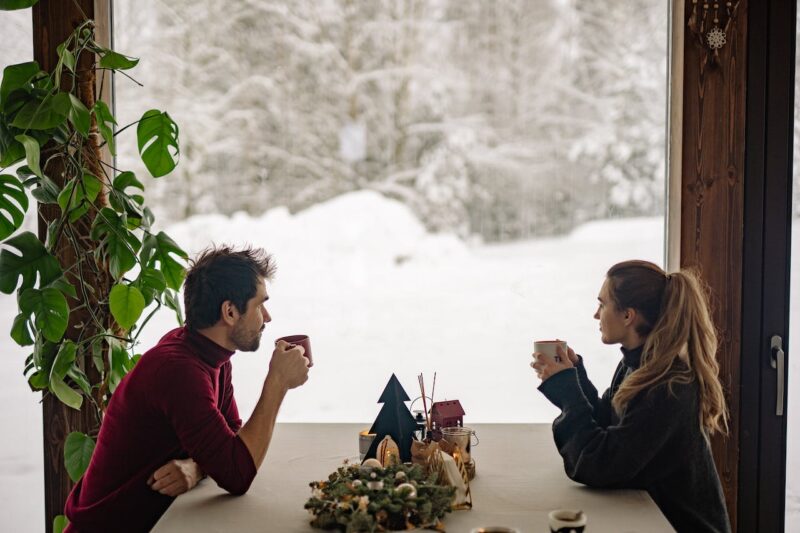
The Space Heating Energy Demand of a passive house must not exceed 15 kWh per sqm of net living space per year or 10 W per sqm peak demand. The Space Cooling Energy Demand requirement roughly matches this, with an additional allowance for dehumidification*.
Loxone calculates your exact heating and cooling demand and knows when you are in or out. It will ensure each room is always at the perfect temperature according to this information. What’s more, a Loxone passive house automation system will try to use ‘free’ methods of climate control – heating a room using the sun for example. This perfectly aligns with the ethos of a passive house by maximising the benefits of its design. Opening and closing the blinds manually is inconvenient and inefficient – automation makes all the difference in this area. During the winter, when the sun enters the building and heats up the air trapped between the glazed windows, the efficiency of an active operational system will be immediately noticed.
Energy Demand
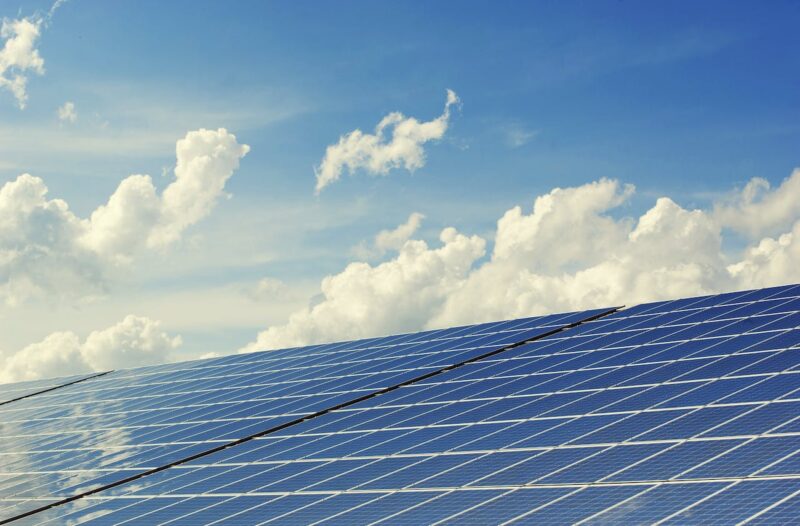


The total energy used by all domestic applications (heating, hot water and domestic electricity) must not exceed 60 kWh per sqm of treated floor area per year for Passive House Classic*.
A Loxone passive house automation system can help you measure and analyse the energy consumption of your building through the clear app interface. There are powerful software features that enable integration with many different energy-related devices, such as solar panel inverters, battery storage, EV chargers, etc, and a Loxone installer can incorporate these into a holistic system to provide a clear overview of the current energy status of building operations at all times and enable targeted optimisation measures. The Loxone passive house automatin system also has the capability to use the cheapest energy tariffs during the day. This will allow for high consumers such as electric car chargers or the heating to use electricity at a lower cost.
Space Heating / Cooling Energy Demand



Energy Demand



The Space Heating Energy Demand of a passive house must not exceed 15 kWh per sqm of net living space per year or 10 W per sqm peak demand. The Space Cooling Energy Demand requirement roughly matches this, with an additional allowance for dehumidification*.
Loxone calculates your exact heating and cooling demand and knows when you are in or out. It will ensure each room is always at the perfect temperature according to this information. What’s more, a Loxone passive house automation system will try to use ‘free’ methods of climate control – heating a room using the sun for example. This perfectly aligns with the ethos of a passive house by maximising the benefits of its design. Opening and closing the blinds manually is inconvenient and inefficient – automation makes all the difference in this area. During the winter, when the sun enters the building and heats up the air trapped between the glazed windows, the efficiency of an active operational system will be immediately noticed.
The total energy used by all domestic applications (heating, hot water and domestic electricity) must not exceed 60 kWh per sqm of treated floor area per year for Passive House Classic*.
A Loxone passive house automation system can help you measure and analyse the energy consumption of your building through the clear app interface. There are powerful software features that enable integration with many different energy-related devices, such as solar panel inverters, battery storage, EV chargers, etc, and a Loxone installer can incorporate these into a holistic system to provide a clear overview of the current energy status of building operations at all times and enable targeted optimisation measures. The Loxone passive house automatin system also has the capability to use the cheapest energy tariffs during the day. This will allow for high consumers such as electric car chargers or the heating to use electricity at a lower cost.
Airtightness
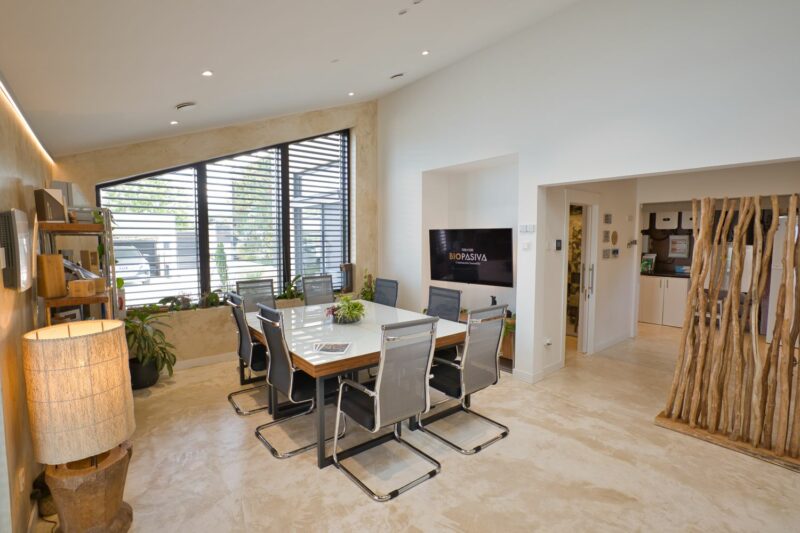


The airtightness in any passive house needs to ensure 0.6 air changes per hour at 50 Pascals pressure*. An airtight layer will reduce the risk of mould, maintain the comfort temperature to minimise the use of the heating system in the winter, and help to manage the overheating criterion for a comfortable summer. The MVHR system can dry out the air, however, if it’s operated without consideration to design and occupancy.
The Loxone system decides when and how intensely to ventilate an area in a smart passive house based on various parameters such as room temperature, humidity and CO2 levels. This not only ensures optimal air quality, but also minimises energy loss by reducing unnecessary ventilation. Presence detection enables demand-oriented control of the ventilation system to achieve even more energy efficiency.
Thermal Comfort
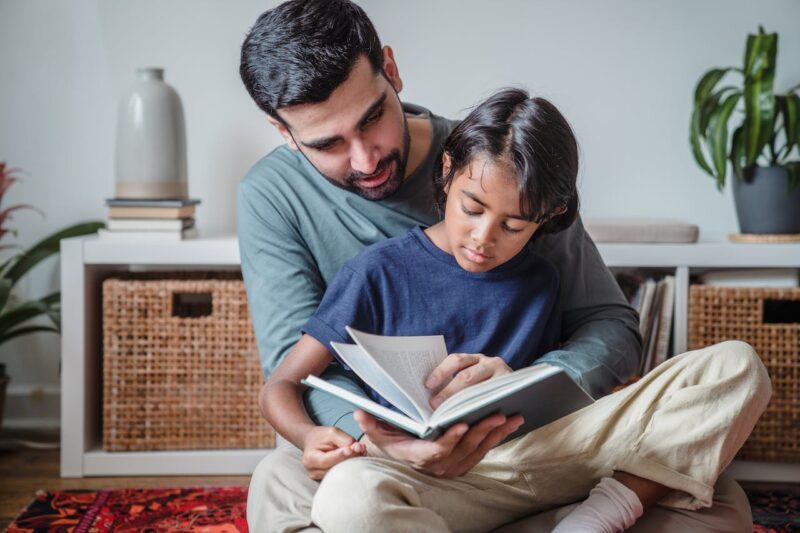


As the Passivhaus Standard states, the temperature in the home cannot exceed 25°C for more than 10% of the hours in a given year*. In the winter, since the inside temperature stays steady without intervention, and cooling off takes longer in a passive house, switching on the heating can be delayed (or brought forward if necessary) without compromising comfort as occupants won’t experience a drop in temperature.
Whether it’s underfloor heating, infrared panels or traditional radiators – gas, oil or a heat pump – the Loxone smart heating system will work regardless of the heating source to ensure that each room is heated as much as necessary. Comfortable temperatures have been shown to have a significant impact on our wellbeing, and home automation for passive houses by Loxone can take care of this using individual room data to improve your mood and your health.
*All quoted data is extracted from the PASSIVHAUS BENEFITS Full Report 5.0 December 2021 published by the Passivhaus Trust.
Airtightness
Thermal Comfort






The airtightness in any passive house needs to ensure 0.6 air changes per hour at 50 Pascals pressure*. An airtight layer will reduce the risk of mould, maintain the comfort temperature to minimise the use of the heating system in the winter, and help to manage the overheating criterion for a comfortable summer. The MVHR system can dry out the air, however, if it’s operated without consideration to design and occupancy.
The Loxone system decides when and how intensely to ventilate an area in a smart passive house based on various parameters such as room temperature, humidity and CO2 levels. This not only ensures optimal air quality, but also minimises energy loss by reducing unnecessary ventilation. Presence detection enables demand-oriented control of the ventilation system to achieve even more energy efficiency.
As the Passivhaus Standard states, the temperature in the home cannot exceed 25°C for more than 10% of the hours in a given year*. In the winter, since the inside temperature stays steady without intervention, and cooling off takes longer in a passive house, switching on the heating can be delayed (or brought forward if necessary) without compromising comfort as occupants won’t experience a drop in temperature.
Whether it’s underfloor heating, infrared panels or traditional radiators – gas, oil or a heat pump – the Loxone smart heating system will work regardless of the heating source to ensure that each room is heated as much as necessary. Comfortable temperatures have been shown to have a significant impact on our wellbeing, and home automation for passive houses by Loxone can take care of this using individual room data to improve your mood and your health.
*All quoted data is extracted from the PASSIVHAUS BENEFITS Full Report 5.0 December 2021 published by the Passivhaus Trust.
Loxone products for a passive house automation system
Miniserver & Extensions
Thanks to the Miniserver’s versatility and our wide range of extensions, all types of heating sources, air conditioning units and ventilation systems can be controlled.
Modbus Electricity Meter
These bi-directional energy meters with Modbus serial interface help you to save energy and run your home more efficiently. They record detailed data such as energy, current, active power and voltage.
Energy Manager Function Block
Loxone is the only automation solution that allows for holistic surplus charge management. The Energy Manager provides a clear overview of all integrated consumers in the Loxone App.
Energy Flow Monitor Function Block
Monitor energy flows, self-consumption, self-production, storage levels, saved costs, reduced CO2 emissions and much more in the Loxone App.
Power Supply & Backup
The Power Supply & Backup has 7 in-built channels with integrated energy monitoring and can support a backup battery to protect against power cuts.
Smart Socket Air
A smart socket with a built-in power meter and temperature sensor that enables you to individually monitor energy consumption and switch plug-in consumers on or off.
Presence Sensor
The basis of intelligent automation. With reliable detection of presence and motion, it enables the most efficient operation of smart features such as lighting, burglar alarms, multiroom audio, zoned heating, ventilation or cooling, and much more.
Shading Actuator Air
Whether you’re using electric curtains, blinds or awnings, the Shading Actuator Air allows you to integrate your smart blinds into your Loxone system in a few simple steps.
Nano 2 Relay Tree
Smart blinds, electric gates, circulation pumps, smart locks or the bathroom extractor fan – the Nano 2 Relay Tree provides flexibility so you don’t have to wire anything back to the panel. When controlling blinds, you will also benefit from the built-in end stop detection.
Valve Actuator Air & Tree
With the Loxone Valve Actuators, every room can be set to a different comfort temperature, and – unlike a smart thermostat – each and every room in your home can be controlled independently, allowing for even bigger energy savings.
Room Comfort Sensor
This device takes precise measurements of temperature, humidity, and CO2 levels and passes this information to the Miniserver to ensure the optimal room condition is achieved around the clock for every area.
Touch Switch
Beautifully designed with a matte plastic surface, the Touch switch brings a standalone compact control element and temperature reading to every room. The five touch points let you control the essential functions in your home.
Loxone Wallbox
The Loxone Wallbox is the perfect solution for convenient and economical electric vehicle charging. It will work in harmony with other smart features such as the photovoltaic system to maximise reusable energy consumption.
Door & Window Contact
Recognises if heating, cooling or ventilation should be paused in a room if a window or door has been left open, ultimately saving energy.
Passive house case studies
Lilu’s House
Casa Sophia
Passivhaus Girona
Passivhaus Premium
Perpetuum Passivhaus
Passive House Case Studies
Lilu’s House
Casa Sophia
Passivhaus Girona
Passivhaus Premium
Perpetuum Passivhaus
Discuss your project

Free & friendly advice
Chat to one of our experts and they can share ideas with you of what is possible – specific to your renovation extension or new build.


Tailored referral
From the large network of Loxone installers around the UK, we’ll help you find the perfect one for your project.


No Pressure
We’re simply here to help you, there are zero obligations to go ahead with anything. As long as we’ve been able to give you good advice, we’re happy.
Let’s chat about your project

Free & friendly advice
Chat to one of our experts and they can share ideas with you of what is possible – specific to your renovation extension or new build.


Tailored referral
From the large network of Loxone installers around the UK, we’ll help you find the perfect one for your project.


No Pressure
We’re simply here to help you, there are zero obligations to go ahead with anything. As long as we’ve been able to give you good advice, we’re happy.
